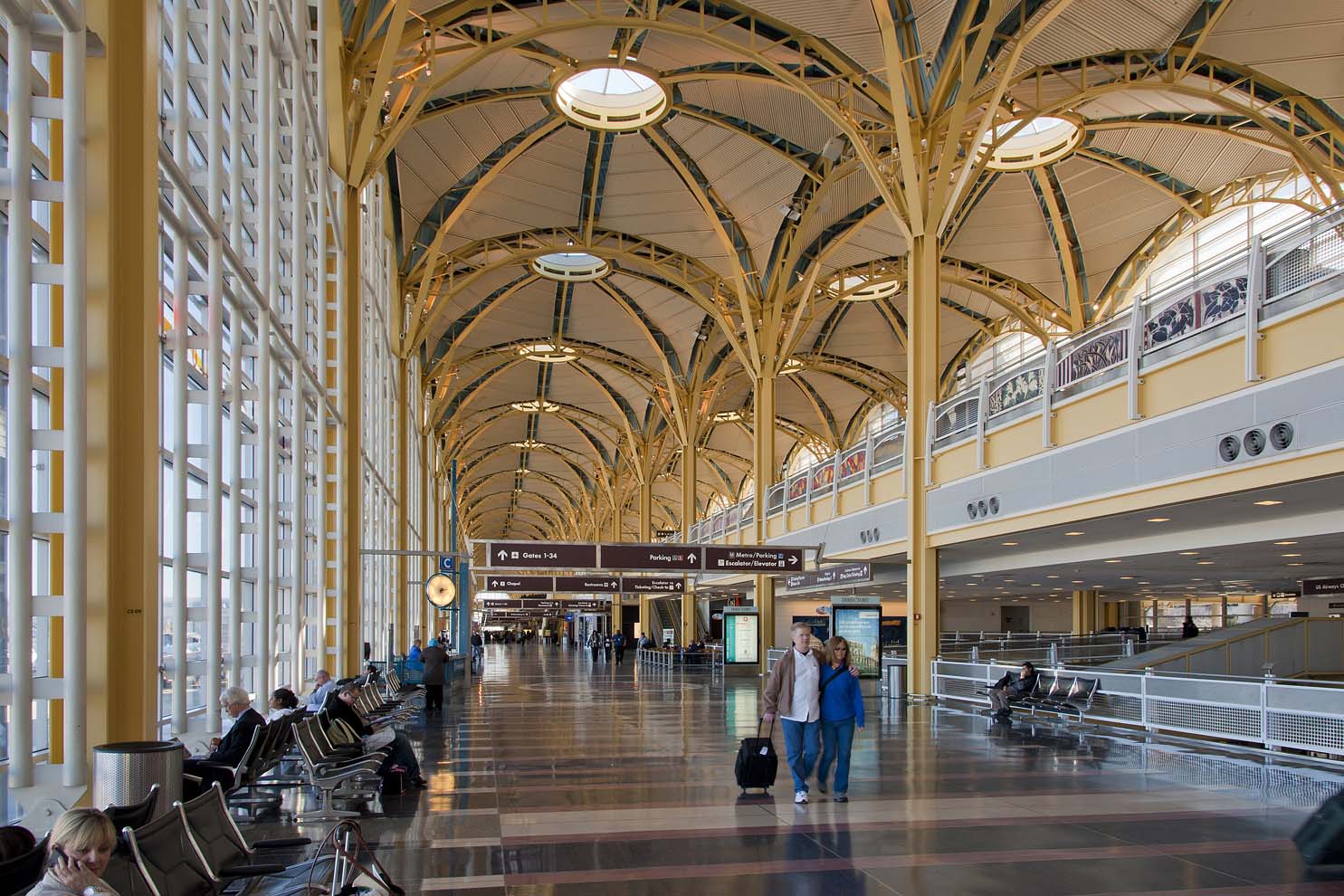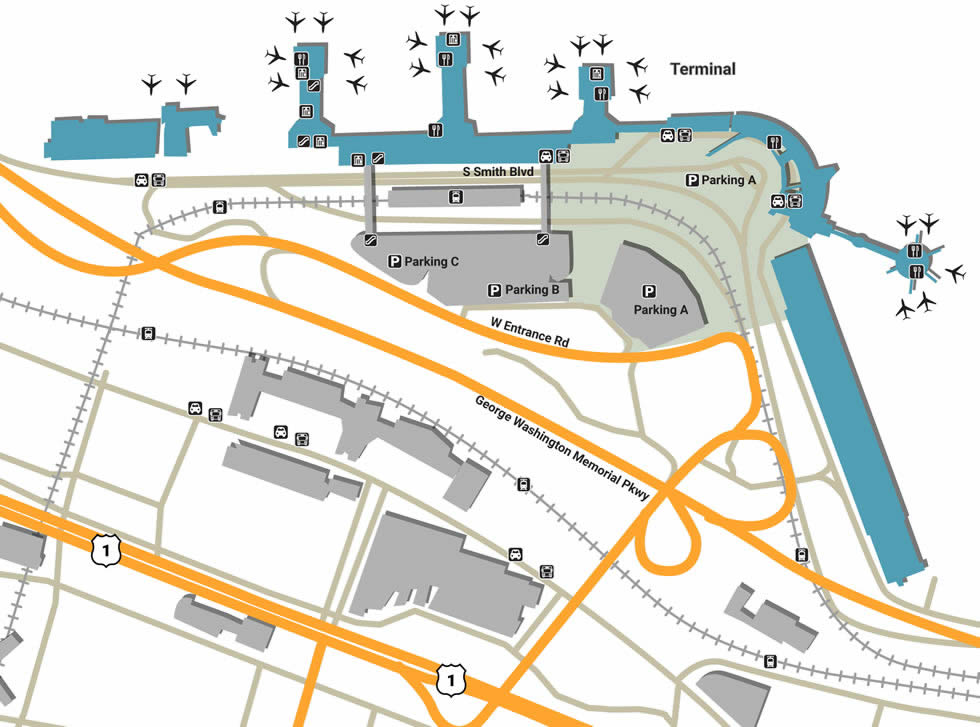Where Is The DCA Airport? A Comprehensive Guide To Ronald Reagan Washington National Airport
Are you wondering where is the DCA airport located? Ronald Reagan Washington National Airport (DCA) is one of the busiest airports in the United States, serving millions of travelers each year. As a key transportation hub, DCA plays a vital role in connecting Washington, D.C., to major cities worldwide. This article will provide you with an in-depth look at the airport's location, facilities, and services.
Traveling to or from Washington, D.C., can be an exciting experience, especially if you're visiting for business, tourism, or government-related activities. Understanding the location of DCA airport is essential for planning your trip effectively. In this guide, we will explore everything you need to know about DCA airport's location, accessibility, and surrounding areas.
This article is designed to help travelers, frequent flyers, and aviation enthusiasts alike. By the end of this comprehensive guide, you'll have a clear understanding of where the DCA airport is located, its significance, and how to navigate it efficiently. Let's dive in!
Read also:Suzuki Capaccino A Retro Gem With Modern Appeal
Table of Contents:
- Airport Location
- History of DCA Airport
- Facilities at DCA Airport
- Transportation Options
- Terminals and Gates
- Surrounding Areas
- Travel Tips for DCA Airport
- DCA Airport Statistics
- Sustainability Initiatives
- Future Plans and Developments
Airport Location
The DCA airport, officially known as Ronald Reagan Washington National Airport, is located in Arlington, Virginia, just across the Potomac River from downtown Washington, D.C. The airport's proximity to the nation's capital makes it an ideal choice for travelers visiting the city for business, politics, or leisure.
Its strategic location ensures that visitors can easily access key attractions such as the White House, the U.S. Capitol, and the Smithsonian museums within minutes. The airport's address is 1 Aviation Cir, Arlington, VA 22202, USA. This location is not only convenient for domestic travelers but also for international visitors who wish to explore the political and cultural heart of the United States.
Geographical Coordinates
- Latitude: 38.8521° N
- Longitude: 77.0379° W
These coordinates place the airport in a prime location, making it easily accessible by road, rail, and air. The airport's layout is designed to accommodate a high volume of passengers while maintaining efficiency and convenience.
History of DCA Airport
Originally opened in 1941 as Washington National Airport, the facility underwent several expansions and upgrades over the decades. In 1998, it was officially renamed Ronald Reagan Washington National Airport to honor the former U.S. President. This renaming was met with some controversy but ultimately became a symbol of national pride.
Throughout its history, the airport has played a crucial role in shaping air travel in the United States. It has witnessed significant advancements in aviation technology and passenger services. Today, DCA airport continues to evolve, adapting to modern demands while preserving its historical significance.
Read also:How Old Is Lou Ferrigno A Comprehensive Guide To The Life And Legacy Of The Incredible Hulk Actor
Key Historical Milestones
- 1941: Airport opens as Washington National Airport.
- 1960s: Expansion to accommodate jet aircraft.
- 1998: Renamed Ronald Reagan Washington National Airport.
These milestones highlight the airport's growth and transformation over the years, positioning it as a vital transportation hub for the nation's capital.
Facilities at DCA Airport
DCA airport offers a wide range of facilities to ensure a comfortable and seamless travel experience for passengers. From lounges to dining options, the airport caters to diverse traveler needs. Here's a breakdown of the key facilities available:
Passenger Amenities
- Restaurants and Cafes: A variety of dining options, including local and international cuisine.
- Shopping: Retail outlets offering everything from souvenirs to luxury goods.
- Business Lounges: Private spaces for business travelers to work or relax.
These amenities are designed to enhance the overall travel experience, providing passengers with comfort and convenience during their layovers or waits.
Transportation Options
Accessing DCA airport is straightforward, thanks to the various transportation options available. Whether you're arriving by car, public transit, or taxi, the airport ensures that travelers can reach their destination with ease.
Public Transit
- Metro: The Washington Metro's Blue and Yellow Lines provide direct access to the airport.
- Shuttle Services: Multiple shuttle services connect the airport to nearby cities and hotels.
These transportation options make DCA airport highly accessible, catering to both local and international travelers.
Terminals and Gates
DCA airport features three main terminals: Terminal A, Terminal B/C, and the Main Terminal. Each terminal is equipped with modern facilities and services to accommodate passengers' needs.
Terminal A
This terminal primarily serves regional flights and offers a more intimate atmosphere compared to the larger terminals. It features a centralized security checkpoint, making it convenient for passengers to navigate.
Terminal B/C
Terminal B/C is the largest terminal at DCA airport and serves most domestic and international flights. It boasts a wide range of amenities, including dining options, shopping, and business lounges.
Understanding the layout of these terminals is essential for efficient navigation and timely boarding.
Surrounding Areas
The area surrounding DCA airport is rich in history and culture. Visitors can explore nearby attractions such as the Pentagon, Arlington National Cemetery, and various museums and monuments. The proximity to Washington, D.C., also allows for easy access to the city's vibrant neighborhoods and landmarks.
Local Attractions
- Pentagon: The headquarters of the U.S. Department of Defense.
- Arlington National Cemetery: A national military cemetery honoring fallen soldiers.
- Smithsonian National Air and Space Museum: A world-renowned museum showcasing aviation and space exploration.
These attractions make the area around DCA airport a must-visit for travelers interested in history, culture, and politics.
Travel Tips for DCA Airport
Traveling through DCA airport can be a smooth experience if you follow these essential tips:
Packing and Preparation
- Arrive early to avoid rush-hour traffic and long security lines.
- Pack essential items in your carry-on for convenience during layovers.
- Check your airline's baggage policies to avoid unexpected fees.
By planning ahead and being prepared, you can ensure a stress-free travel experience at DCA airport.
DCA Airport Statistics
DCA airport is one of the busiest airports in the United States, serving millions of passengers annually. Here are some key statistics:
- Annual Passenger Traffic: Over 20 million passengers.
- Airlines Serving DCA: More than 20 major carriers.
- Destinations: Over 100 domestic and international destinations.
These numbers highlight the airport's significance as a major transportation hub and its role in connecting Washington, D.C., to the rest of the world.
Sustainability Initiatives
DCA airport is committed to promoting sustainability and reducing its environmental impact. The airport has implemented several initiatives to achieve this goal:
Green Programs
- Energy Efficiency: Upgrading facilities to reduce energy consumption.
- Waste Management: Implementing recycling programs to minimize waste.
- Water Conservation: Installing water-saving technologies throughout the airport.
These efforts demonstrate DCA airport's dedication to sustainability and its responsibility to protect the environment for future generations.
Future Plans and Developments
Looking ahead, DCA airport has several exciting plans and developments in the pipeline. These include:
Infrastructure Upgrades
- Terminal Expansion: Expanding existing terminals to accommodate increasing passenger traffic.
- Technology Integration: Incorporating advanced technology to enhance passenger experience and operational efficiency.
These developments aim to position DCA airport as a leader in modern aviation, ensuring it remains a top choice for travelers visiting Washington, D.C.
Kesimpulan
In conclusion, understanding where is the DCA airport located is essential for anyone planning a trip to Washington, D.C. This comprehensive guide has covered everything from the airport's location and history to its facilities and future plans. By following the travel tips and utilizing the available resources, you can ensure a smooth and enjoyable travel experience at DCA airport.
We invite you to share your thoughts and experiences in the comments section below. Additionally, feel free to explore other articles on our website for more valuable information on travel, aviation, and related topics. Thank you for reading, and happy travels!


